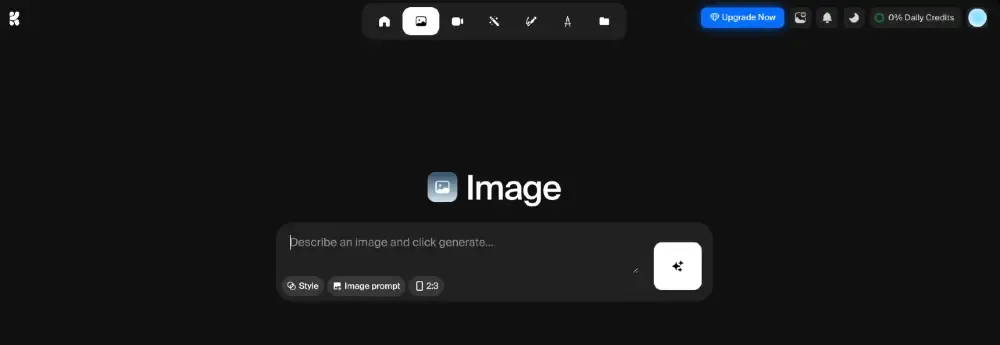Krea raises $83M to simplify GenAI design workflows
Krea secures $83M to streamline generative AI for designers. Its all-in-one platform supports creators at Pixar, LEGO, and Samsung.

Aiming to be the go-to workspace for designers using generative AI, San Francisco-based Krea has recently raised US$83 million in funding across several rounds. The platform, which helps creatives navigate a fragmented AI tool ecosystem, now boasts users from major companies like Pixar, LEGO, and Samsung.
The latest Series B round, worth US$47 million, was led by Bain Capital Ventures. Previous backers Andreessen Horowitz and Abstract Ventures also returned. According to sources cited by TechCrunch, Krea is now valued at US$500 million post-money.
In a market flooded with rapidly evolving AI tools, Krea is pitching a unified interface that wraps multiple image-generation models into a streamlined creative workflow — no prompt engineering degree required.
What is Krea?
Krea offers a generative AI platform designed for visual creatives — illustrators, motion designers, and marketers — who want fast, intuitive access to the best models without needing to micromanage the underlying tech.
Users describe an image they want to create, and Krea auto-selects the most suitable models to generate initial outputs. From there, creatives can tweak elements in a drag-and-drop canvas, skipping the need to re-prompt or retrain.
The platform currently supports:
- Still image generation and editing
- Video-based GenAI workflows (in beta)
- Customizable editing tools tailored to creative use cases
Audio and music generation capabilities are in the works, alongside expanded enterprise features.



Krea AI functions includes chat prompts and real-time image editing.
Why this matters for marketers
With the explosion of AI tools like Midjourney, Stable Diffusion, and DALL·E, creative teams are often stuck juggling multiple interfaces and output inconsistencies. Krea’s platform helps marketers and designers:
- Maintain consistent brand visuals across campaigns
- Iterate quickly with AI-generated concepts
- Collaborate without tech-heavy onboarding
By wrapping multiple models into a single, customizable interface, Krea removes the need to constantly evaluate “which GenAI tool is best today?” — a task marketers rarely have time for.
For in-house creative leads, the value is in speed and usability. As Aaref Hilaly of Bain Capital Ventures put it, “Each model is being leapfrogged very quickly by another one... having a layer like Krea on top makes sense.”
What is Krea’s traction?
Though exact user counts and revenue figures haven’t been disclosed, Krea claims adoption by professionals at Pixar, LEGO, Samsung, Loop Earplugs, and Perplexity AI.
Its funding breakdown is as follows:
- Pre-seed/seed: US$3 million
- Series A: US$33 million
- Series B: US$47 million Total funding to date: US$83 million Valuation: US$500 million (post-money)
So far, Krea has been tailored toward individuals and small creative teams. The new funding will help build out enterprise-ready features and support expanded use cases like generative music and collaborative workflows.

Who are Krea’s founders?
Krea was founded by Victor Perez (CEO) and Diego Rodriguez (CTO), two creatives-turned-engineers who met during their undergraduate studies in audiovisual engineering in Barcelona.
Both have backgrounds in the arts — music and painting — but pivoted to AI research. After brief stints at Cornell University (including a royal fellowship from the King of Spain), they dropped out to build Krea full time.
Their vision isn’t to automate creativity, but to augment it. As Perez puts it: “We are building tools for people to be more creative... to focus more on ideas.”
Who are Krea’s competitors?
Krea’s approach to unifying GenAI models for visual output puts it in a category of its own, but there are a few adjacent players:
- Runway – Offers GenAI tools for video and image generation. Raised over US$235 million. Used by creatives at Paramount and CBS.
- Adobe Firefly – Adobe’s GenAI suite now integrates into Creative Cloud. Focused on brand-safe outputs and enterprise compatibility.
- Pika Labs – Known for text-to-video GenAI. Recently raised US$80 million and targets similar creative workflows, albeit with a heavier motion focus.
While tools like Poe (by Quora) provide model aggregation for text generation, Krea’s differentiator lies in editable, multi-model image outputs — more useful for visual designers than prompt-based interfaces.
Closing thoughts
Krea isn’t trying to replace creatives — it’s trying to give them a faster, smarter canvas. In a landscape where every new GenAI tool promises efficiency, Krea’s bet is that the real win comes from unifying fragmented workflows and letting creatives stay… creative.
As agencies and brands increasingly rely on AI for design speed and variation, platforms like Krea could become essential infrastructure — not just for experimentation, but for production.




